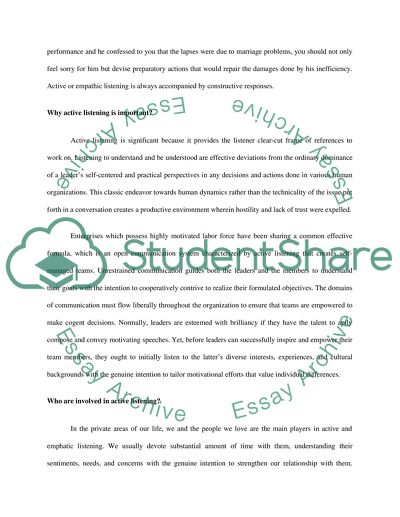Cite this document
(Features of Active Listening Assignment Example | Topics and Well Written Essays - 2250 words, n.d.)
Features of Active Listening Assignment Example | Topics and Well Written Essays - 2250 words. Retrieved from https://studentshare.org/education/1546756-active-listening-leader
Features of Active Listening Assignment Example | Topics and Well Written Essays - 2250 words. Retrieved from https://studentshare.org/education/1546756-active-listening-leader
(Features of Active Listening Assignment Example | Topics and Well Written Essays - 2250 Words)
Features of Active Listening Assignment Example | Topics and Well Written Essays - 2250 Words. https://studentshare.org/education/1546756-active-listening-leader.
Features of Active Listening Assignment Example | Topics and Well Written Essays - 2250 Words. https://studentshare.org/education/1546756-active-listening-leader.
“Features of Active Listening Assignment Example | Topics and Well Written Essays - 2250 Words”. https://studentshare.org/education/1546756-active-listening-leader.


